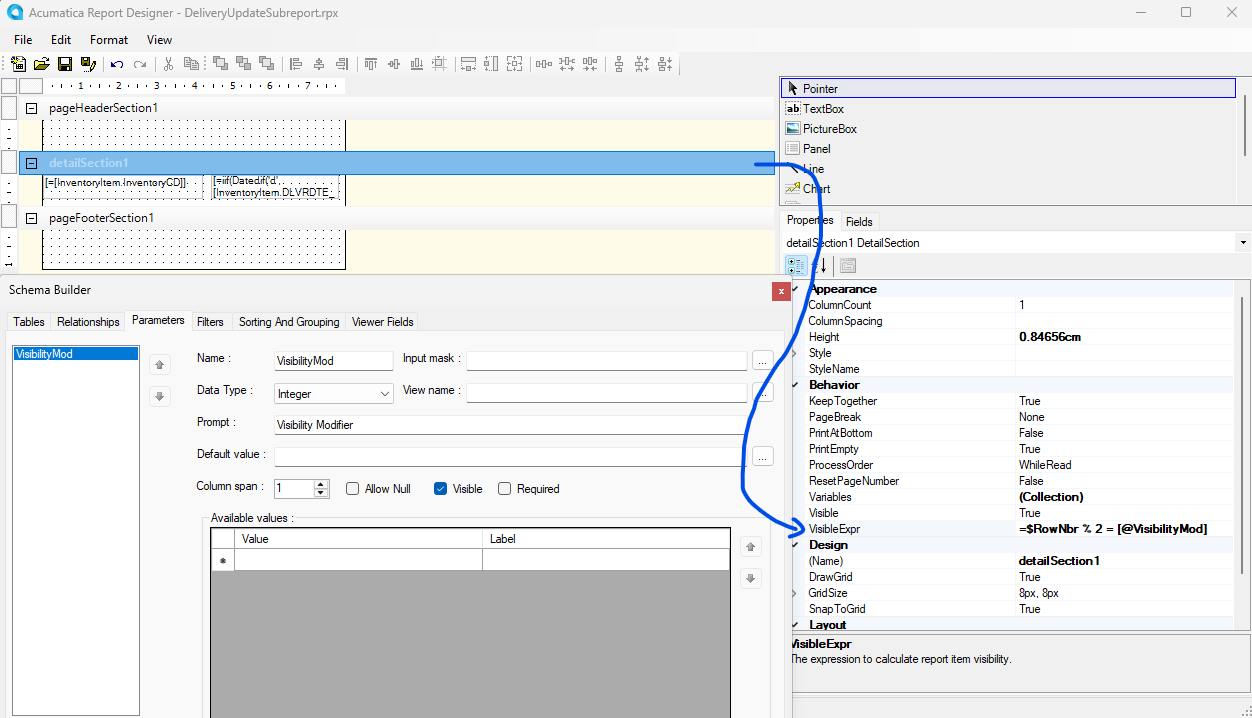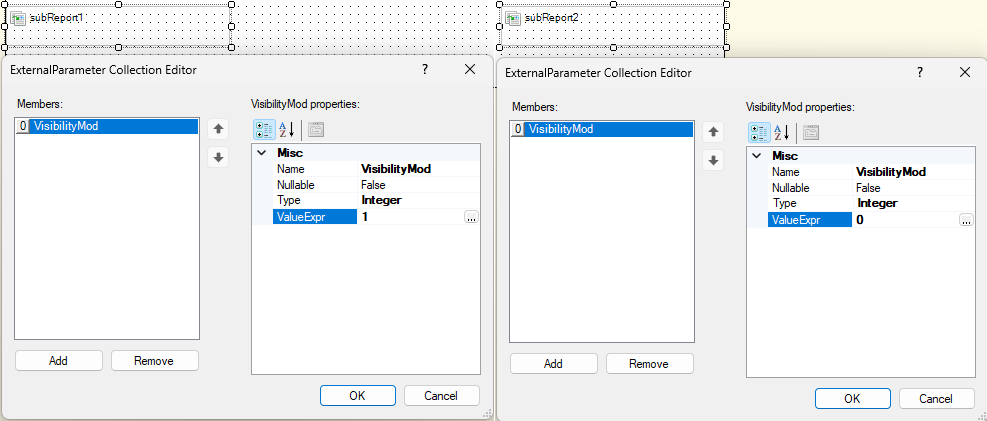I recently had the task of creating a report with a two-column layout and was surprised at the lack of guidance available, so I am posting my results for the next person to find more easily.
Hiding alternating rows formula:
The key to creating multiple columns pull more than one record of data into a section and then to toggle the visibility of that section by a formula that uses the modulus (% operator) of the row number.
First create a variable for the detail section, $RowNbr, with a value of =$RowNbr + 1. If you have groupings for your data, then also set that $RowNbr variable in the parent group to have a value of 0, which will reset the counter in each grouping.
Then for the VisibleExpr of that detail section, set the value to =$RowNbr % 2 = 1 to look something like this:
Record 1 Record 2 (visible)
$Record 2 Record 3 (hidden)
Record 3 Record 4 (visible)
Record 4 Record 5 (hidden)
…
Displaying multiple records in one section with NEXT():
One approach to display multiple records in one detail section is to use the NEXT() function. Intuitively, the NEXT() function returns the value of the next record, or null if there are no more records after the current record for the current grouping.

An example of this in practice can be found on the Inventory Item Labels report (IN619200) to print two labels per section.
Personally, this is not the approach I used. I actually needed three columns and wrapping every value in Next(Next()) got very cluttered the more complicated the formula was. Also, if ever changes would be needed later, they must be applied to all three columns of data which opens the door to one section being out of sync with the other; I don’t like code repetition like that.
Displaying multiple records in one section with a subreport:
My solution was to create a subreport that represents a single column. The technique is the same inside the subreport for hiding alternating lines, but instead of a fixed value in the VisibleExpr, I used a parameter, “=$RowNbr % 3 = [@VisibilityMod]”.
(If you want even more flexibility, you can have another parameter for how many columns there are in total, for something like “=$RowNbr % [@Columns] = [@VisibilityMod]”, but that is probably overkill unless you reuse the subreport)
Back in the main report, I add three instances of this subreport. The VisibilityMod parameter of the first subreport is 1, the second 2, and third 0, noting that 3 % 3 = 0. Also, these sub reports must be placed in the header/footer of a group instead of the detail section. Thus, a dynamic multi column layout with the subreports working like this:
Subreport1 Subreport2 Subreport3
Record 1 Record 1 Record 1
Record 2 Record 2 Record 2
Record 3 Record 3 Record 3
Record 4 Record 4 Record 4
…








